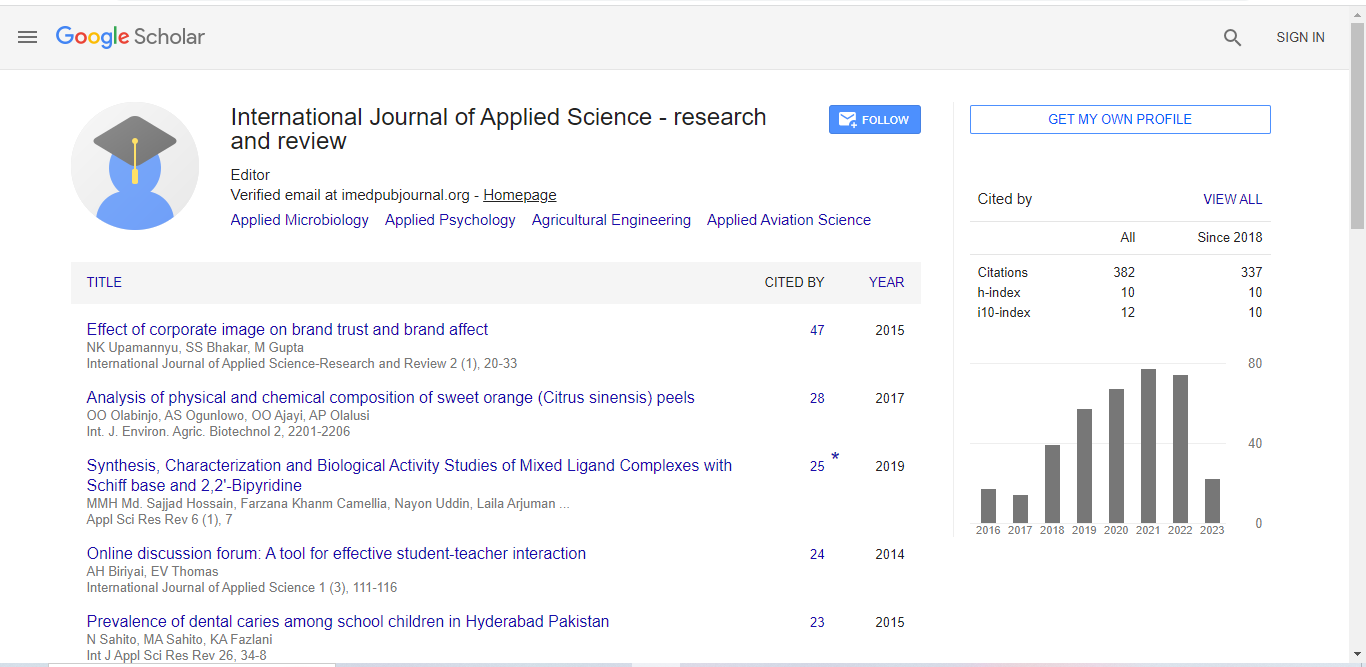Commentary - (2024) Volume 11, Issue 4
Cutting-Edge Image Encryption with Hyperchaotic Systems, DNA Computing, and SHA-512 Hash Functions
Cyrus Lange*
Department of Applied Science, University of Debrecen, Hungary
*Correspondence:
Cyrus Lange,
Department of Applied Science, University of Debrecen,
Hungary,
Email:
Received: 31-Jul-2024, Manuscript No. IPIAS-24-21463;
Editor assigned: 02-Aug-2024, Pre QC No. IPIAS-24-21463 (PQ);
Reviewed: 16-Aug-2024, QC No. IPIAS-24-21463;
Revised: 21-Aug-2024, Manuscript No. IPIAS-24-21463 (R);
Published:
28-Aug-2024, DOI: 10.36648/2394-9988-11.4.35
Description
A new hyperchaotic image encryption scheme based on DNA computing
and SHA-512 presents a sophisticated approach to enhancing
the security of digital images. This method combines advanced
cryptographic techniques with the innovative principles of DNA
computing and the robustness of the SHA-512 hashing algorithm
to create a highly secure encryption system. The complexity and
novelty of this scheme offer promising solutions for safeguarding
sensitive visual information against unauthorized access and cyber
threats. Hyperchaotic systems are characterized by their extreme
sensitivity to initial conditions and their ability to generate complex,
unpredictable sequences. These properties make hyperchaotic
systems particularly suitable for cryptographic applications,
as they can produce encryption keys that are highly resistant to
decryption attempts. In the context of image encryption, a hyperchaotic
system generates a sequence of pseudo-random numbers
that are used to encrypt and decrypt image data, ensuring that the
encrypted output is substantially different from the original image.
The integration of DNA computing principles adds another layer of
security and complexity to the encryption scheme. DNA computing
leverages the unique properties of biological DNA to perform
complex calculations and data processing tasks. In the proposed
encryption scheme, DNA-based operations are employed to enhance
the encryption process, making it more intricate and less
susceptible to conventional attacks. DNA sequences are used to
generate encryption keys and manipulate image data, exploiting
the parallelism and massive storage capacity inherent in DNA molecules.
The SHA-512 algorithm, part of the SHA-2 family of cryptographic
hash functions, is used to provide additional security to
the encryption scheme. SHA-512 generates a 512-bit hash value
from input data, ensuring a high level of data integrity and collision
resistance. By incorporating SHA-512 into the encryption process,
the scheme benefits from a robust hashing mechanism that further
strengthens the security of the encrypted images. The hash
values produced by SHA-512 are used to initialize and control the
hyperchaotic system, adding an extra layer of unpredictability to
the encryption keys. In practice, the encryption scheme operates
through several stages. First, the image data is converted into a
format suitable for processing by the hyperchaotic system. This
involves breaking down the image into smaller blocks and applying
pre-processing techniques to prepare the data for encryption.
The hyperchaotic system generates a sequence of pseudo-random
numbers based on the initial conditions set by the SHA-512 hash
values. These numbers are used to scramble the image data, transforming
it into an encrypted form that is visually indistinguishable
from random noise. The DNA computing component comes into
play by using DNA sequences to manipulate the encrypted image
data further. Operations such as DNA-based pattern matching and
sequencing are employed to enhance the complexity of the encryption
process. This additional manipulation ensures that the
encryption scheme remains resistant to various cryptographic attacks,
including brute force and pattern recognition attempts. To
decrypt the image, the process is reversed. The encrypted data
is processed using the same hyperchaotic system and DNA-based
operations, guided by the SHA-512 hash values. This ensures that
the original image can be accurately restored, provided that the
correct encryption keys and parameters are used. The robustness
of the hyperchaotic system, combined with the complexity introduced
by DNA computing and SHA-512, makes it highly challenging
for unauthorized users to decrypt the image without proper
access to the encryption keys. In summary, the new hyperchaotic
image encryption scheme based on DNA computing and SHA-512
offers a cutting-edge solution for securing digital images.
Acknowledgement
None.
Conflict Of Interest
The author declares there is no conflict of interest in publishing
this article.
Citation: Lange C (2024) Cutting-edge Image Encryption with Hyperchaotic Systems, DNA Computing, and SHA-512 Hash Functions. Int J Appl Sci Res Rev. 11:35.
Copyright: © 2024 Lange C. This is an open-access article distributed under the terms of the Creative Commons Attribution License, which permits unrestricted use, distribution, and reproduction in any medium, provided the original author and source are credited.

